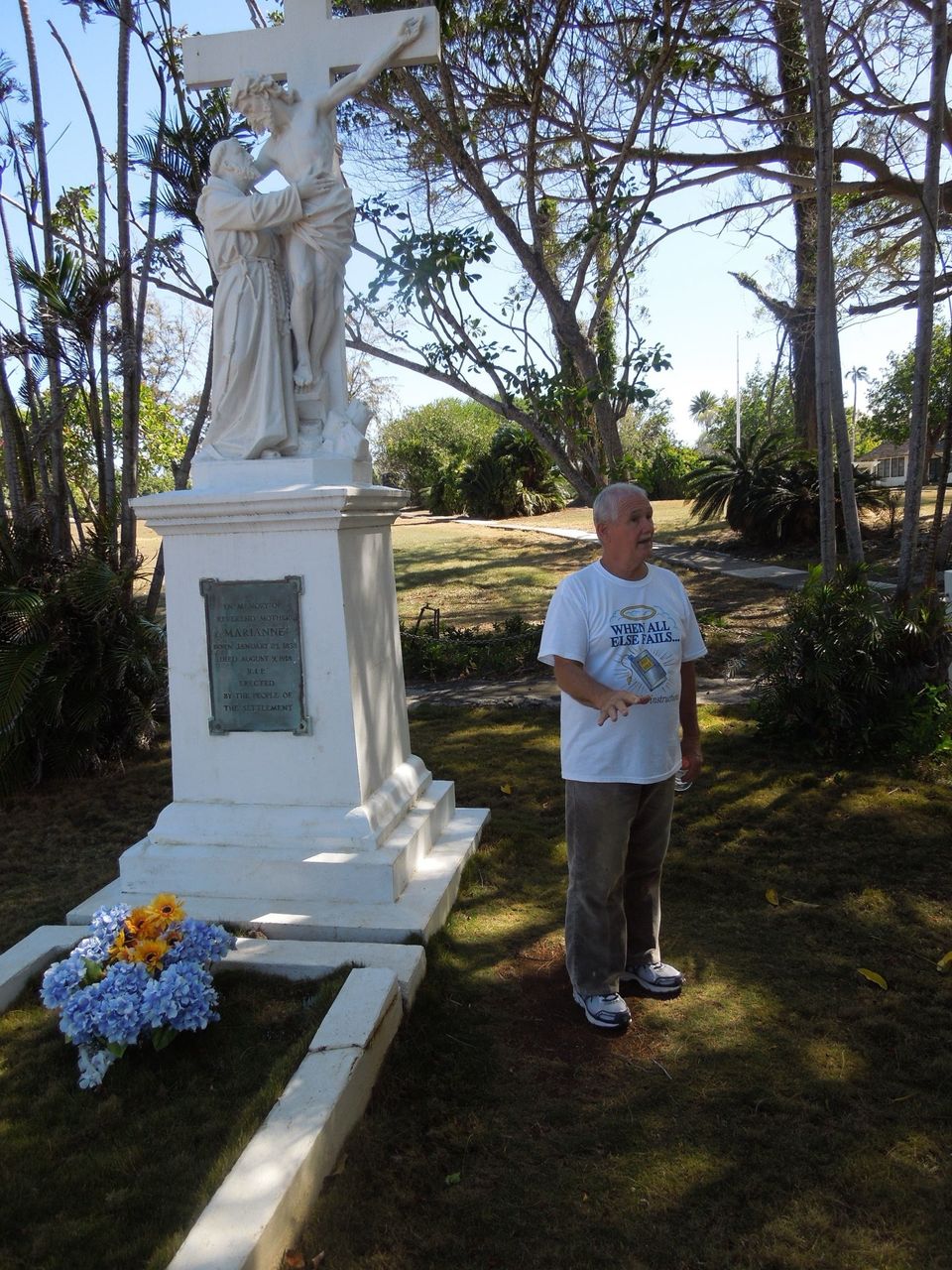Standing in front of the simple white monument marking the original grave of Mother Marianne Cope at Kalaupapa on the Hawaiian Island of Molokai on Oct. 12, some members of my tour group were visibly moved.
For good reason.
Blessed Marianne Cope will be canonized by Pope Benedict XVI at a ceremony at St. Peter's Basilica in Vatican City on Oct. 21, and from that day forward will be known as Saint Marianne Cope. Once the process to canonize Mother Marianne was approved, her title became "Blessed," so I refer to her as either depending on the time in history.
Blessed Marianne, who died in 1918, will follow in the footsteps of Saint Damien De Veuster. Both are exalted for the work they did helping Hawaiian-born patients suffering with Hansen's Disease (leprosy) who were exiled to the peninsula in the 1800s. Blessed Marianne dedicated 30 years of her life, from 1888 to 1918, to the people of Kalaupapa. Mother Marianne arrived in Honolulu, Hawaii in 1883, from the New York-based Sisters of Saint Francis convent and two years later was awarded the Medal of the Royal Order of Kapiolani by King Kalakaua for her work helping the sick.
Mother Marianne then travelled to Molokai in 1888, one year prior to the death of Belgian-born Father Damien, who was canonized in October 2009. In 2005, Mother Marianne's remains were exhumed and relocated to the chapel at St. Anthony Convent in her home parish of Syracuse, New York.
Despite the fact Kalaupapa will soon be home to a second saint, it is so isolated only a few thousand visitors make the pilgrimage to the area annually to learn the sometimes dark history of this sacred place. I flew in on a small charter plane and landed on the smallest runway in the State of Hawaii. The flight itself, though only six minutes long, is an adventure and gives a bird's-eye view of the stunningly beautiful landscape of Kalaupapa and adjacent Kalawao, located on the eastern side of the peninsula where the first group of Hansen's Disease patients were forcibly sent.
Looking down at the huge waves crashing onto the beaches of Kalawao, located below the highest sea cliffs in the world, one can only imagine the fear these patients must have felt after being ordered from their homes by the government and then sometimes forced off the boats bringing them to the area into the ocean and made to swim ashore. The sea cliffs rise 2,000 feet above the peninsula, segregating it from the rest of Molokai, creating a kind of natural prison. It was Mother Marianne who relocated the original hospital camp at Kalawao to Kalaupapa located on the western side of the peninsula. In 1980, Kalaupapa became a national historical park.
Once our plane landed at Kalaupapa, my small tour group was picked in an aging yellow school bus driven by our knowledgeable and charming guide for the day, Norman Soares. We then swung by and picked up a group of brave riders who had just traversed down to the settlement by mule, travelling 1,600 feet across 26 steep switchbacks that criss-cross the sea cliffs. As our bus lumbered over the uneven, dusty roads of the settlement, Soares pointed out places of interest and we were able to disembark at key locations of the peninsula, including Mother Marianne's monument and St. Philomena Catholic Church, the home of Saint Damien's original grave.
Father Damien was originally buried in Kalawao, but in 1936 the Belgian government successfully lobbied to have his remains returned to his home country. After Father Damien's beatification in 1995, on his way to sainthood, his hand was returned to Hawaii.
On the day of my visit, Father Damien's simple gravestone was adorned with flower leis left drying in the hot Hawaiian sun, having been placed there by past visitors. Adjacent to the small stone church is a field of green, which Soares explained is full of unmarked graves. Out of respect, the field is a no-entry zone. The only other restricted areas on the peninsula are the residences of the few remaining survivors of Hansen's disease who still reside at Kalaupapa.
St. Philomena's was used for Catholic church services after Father Damien arrived at Kalawao in 1873, and under his direction it was expanded twice. It was Brother Joseph Dutton who completed the work after Father Damien's death in 1889. Brother Joseph's grave is located next to Father Damien's at St. Philomena's. There are 12 cemeteries located on the peninsula, each adjacent to the shoreline and beaches.
It was after touring the area the words of our pilot came back to me. After disembarking at the tiny Kalaupapa airport, our pilot offered this advice, "This is a very special place and if you open your hearts, you'll feel just how special it is." Truer words were never spoken.
Our group was made up mostly of tourists staying on other islands, such as Maui and Oahu, who had flown over for a day to do the tour. If you plan to make the pilgrimage to Kalaupapa and have the time, I highly recommend spending a couple of days on Molokai. The island offers a glimpse of Old Hawaii rarely seen today.
Getting to Kalaupapa: Visit fatherdamientours.com for flights from the Molokai Airport. The more adventurous can travel by mule by visiting muleride.com. Even hikers must receive permission from the National Park Service of Hawaii before hitting the trail. Visit nps.gov/kala/index.htm for more information.
